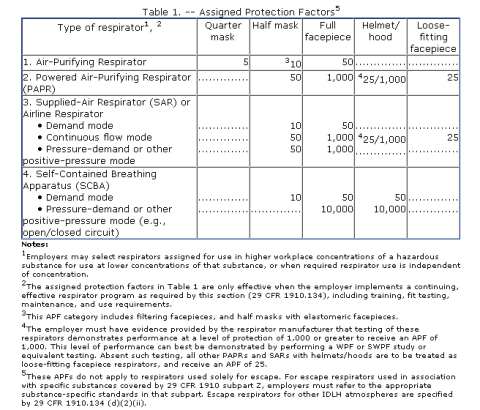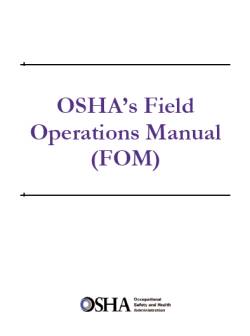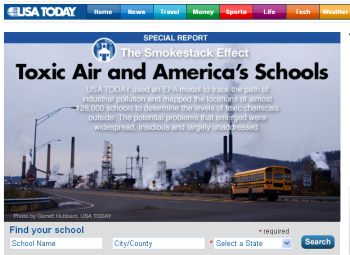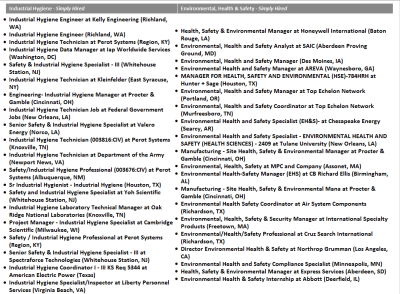Scientific American – Are Some Chemicals More Dangerous at Low Doses?
Original article appeared in the Scientific American Blog “60-Second Science“, by David Biello
 There are some 82,000 chemicals used commercially in the U.S., but only a fraction have been tested to make sure they’re safe and just five are regulated by the U.S. Environmental Protection Agency (EPA), according to congressional investigators. But a government scientist says there’s no guarantee testing actually rules out health risks anyway.
There are some 82,000 chemicals used commercially in the U.S., but only a fraction have been tested to make sure they’re safe and just five are regulated by the U.S. Environmental Protection Agency (EPA), according to congressional investigators. But a government scientist says there’s no guarantee testing actually rules out health risks anyway.
The basic premise of safety testing for chemicals is that anything can kill you in high enough doses (even too much water too fast can be lethal). The goal is to find safe levels that cause no harm. But new research suggests that some chemicals may be more dangerous than previously believed at low levels when acting in concert with other chemicals.
“Some chemicals may act in an additive fashion,” Linda Birnbaum said this week at a conference held at the Columbia Center for Children’s Environmental Health at Columbia University. “When we look one compound at a time, we may miss the boat.”
Birnbaum, director of both the National Institute for Environmental Health Sciences (NIEHS) and the National Toxicology Program in Washington, D.C., noted that some chemicals, such as those that mimic human hormones, may combine with other hormonelike chemicals at low doses to produce big effects.
For example, bisphenol A (BPA), a primary component of some plastics, reacts with cells in the same way as the female hormone estrogen and could be acting synergistically with other pseudoestrogens in the bloodstream to produce heart disease, diabetes or liver failure. Such effects have been observed in animal studies in the lab as well as in frogs in the field for chemicals ranging from the phthalates (used to help perfumes scent linger and make plastics soft) to ubiquitous herbicides like atrazine, linked to malformation in frogs.
In fact, Birnbaum says, there may be no safe dose of certain compounds. For example, lead, a potent neurotoxicant, has been disappearing from the bloodstreams of American children since the 1970s when it was phased out of gasoline and paint. But some children are still exposed to low levels from old, peeling paint and its effects on intelligence and behavior can still be seen. “There is no safe level of lead,” Birnbaum noted.

 AIHA offered the following recommendations: 1) “for the periodic inspection and maintenance of engineering controls and equipment, recordkeeping of the results of the inspections, and correction of any problems found during the inspections within a reasonable time.” 2) “determine whether or not it is possible for OSHA to promulgate a final standard within 18 months of enactment of the legislation.”
AIHA offered the following recommendations: 1) “for the periodic inspection and maintenance of engineering controls and equipment, recordkeeping of the results of the inspections, and correction of any problems found during the inspections within a reasonable time.” 2) “determine whether or not it is possible for OSHA to promulgate a final standard within 18 months of enactment of the legislation.”
 Here are some of the information that has been put together based upon the claims of off-gasing from chinese made drywall.
Here are some of the information that has been put together based upon the claims of off-gasing from chinese made drywall. “This document reviews what is currently known about nanoparticle toxicity, process emissions and exposure assessment, engineering controls, and personal protective equipment. This updated version of the document incorporates some of the latest results of NIOSH research, but it is only a starting point. The document serves a dual purpose: it is a summary of NIOSH’s current thinking and interim recommendations; and it is a request from NIOSH to occupational safety and health practitioners, researchers, product innovators and manufacturers, employers, workers, interest group members, and the general public to exchange information that will ensure that no worker suffers material impairment of safety or health as nanotechnology develops.”
“This document reviews what is currently known about nanoparticle toxicity, process emissions and exposure assessment, engineering controls, and personal protective equipment. This updated version of the document incorporates some of the latest results of NIOSH research, but it is only a starting point. The document serves a dual purpose: it is a summary of NIOSH’s current thinking and interim recommendations; and it is a request from NIOSH to occupational safety and health practitioners, researchers, product innovators and manufacturers, employers, workers, interest group members, and the general public to exchange information that will ensure that no worker suffers material impairment of safety or health as nanotechnology develops.”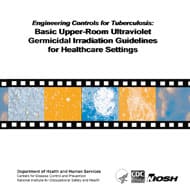 “Research indicates that an appropriately designed and maintained upper-room UVGI system may kill or inactivate airborne TB bacteria and increase the protection afforded to healthcare workers while maintaining a safe level of UVGI in the occupied lower portion of the room. The purpose of this document is to examine the different parameters necessary for an effective upper-room UVGI system and to provide guidelines to healthcare managers, facility designers, engineers, and industrial hygienists on the parameters necessary to install and maintain an effective upper-room UVGI system. These guidelines are consistent with previous CDC healthcare guidelines and expand upon them. This document provides an overview of the current knowledge concerning upper-room UVGI systems and research needs. Information from CDC/NIOSH-funded laboratory studies and other relevant studies is combined in this report to provide guidelines for the installation and use of upper-room UVGI systems. Although other pathogenic microorganisms may be killed or inactivated by upper-room UVGI systems, the guidelines were developed for the installation and use of upper-room UVGI systems capable of killing or inactivating surrogates of mycobacteria.”
“Research indicates that an appropriately designed and maintained upper-room UVGI system may kill or inactivate airborne TB bacteria and increase the protection afforded to healthcare workers while maintaining a safe level of UVGI in the occupied lower portion of the room. The purpose of this document is to examine the different parameters necessary for an effective upper-room UVGI system and to provide guidelines to healthcare managers, facility designers, engineers, and industrial hygienists on the parameters necessary to install and maintain an effective upper-room UVGI system. These guidelines are consistent with previous CDC healthcare guidelines and expand upon them. This document provides an overview of the current knowledge concerning upper-room UVGI systems and research needs. Information from CDC/NIOSH-funded laboratory studies and other relevant studies is combined in this report to provide guidelines for the installation and use of upper-room UVGI systems. Although other pathogenic microorganisms may be killed or inactivated by upper-room UVGI systems, the guidelines were developed for the installation and use of upper-room UVGI systems capable of killing or inactivating surrogates of mycobacteria.”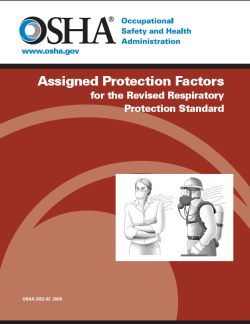 OSHA has issued a new guidance document for employers who may need to establish and implement a respiratory protection program due to potential exposures to contaminants in workplace air. The document focusues on the mandatory selection provisions of the assigned protection factors (APFs), maximum use concentrations (MUCs) and the use of the APF Table 1 of
OSHA has issued a new guidance document for employers who may need to establish and implement a respiratory protection program due to potential exposures to contaminants in workplace air. The document focusues on the mandatory selection provisions of the assigned protection factors (APFs), maximum use concentrations (MUCs) and the use of the APF Table 1 of 